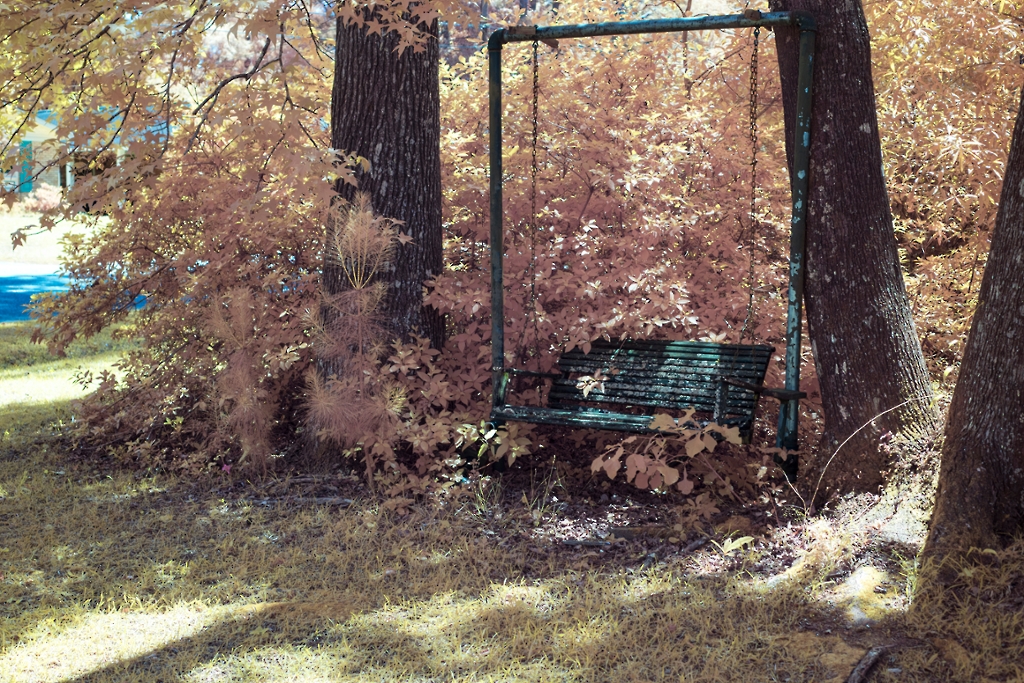Thanks!
The colour separation has a large element of pot luck - it's considerably less on this shot, taken just a few minutes apart (same filter/WB/lens/processing...)
 Dovercourt park IR by Mike Kanssen, on Flickr
Dovercourt park IR by Mike Kanssen, on Flickr
-
-
-
-
-
Ooh, that's a neat colour palette!
-
-
Another interesting image! My sister lives not too far from there in Ladysmith. She watches the ships go by from her kitchen window.
-
-
Some lovely skies at a local pond this evening. I was testing out the Canon ef-s 18-135mm lens in hopes it would be a good superzoom solution. Unfortunately, the copy I received turned out to be just okay. The IQ was not as good as I was hoping for. Also, it has an issue with the AF motor so it's going back anyway.
Canon M6, 590nm.
-
Another one from the archives. This was near the start of my exploration of false colour infrared and I used a dark orange filter on a full spectrum conversion. I wound up using dark red most of the time but the orange filter has some nice character too. Most post production in Lightroom with a channel swap and hue refinement in Photoshop.
-
Do you know what the cutoff on that orange filter is? I'm thinking somewhere in the 590nm range.
-
It's a B+W 040, and it looks like they still have some specs up on their website. If I'm reading the chart right it starts dropping off around 575nm and cuts completely by 525.
-
It appears that convention is to give the value of the filter equal to the intersection of the wavelength at 50% transmission. So, this 040 filter is about 550nm. Nice to know that there are other options out there. I do have a number of black and white filters I could be using.
-
Heh, now that you mention the convention re: wavelength cutoffs, I see that the filter is described as an Orange 550 so that makes perfect sense.
I originally picked up the Yellow, Orange, and Dark Red from that page. As I mentioned above, after my initial experimentation I started using the Dark Red 630 as my default. However, now that I've gotten better at fine tuning the colour palette, I think I'm going to start using the Orange more. I might even have to pull out the Yellow again to see if I was hasty in avoiding it.
-
I got out my old black and white filters. One was by Nikon, and was designated 'B12'. It is a medium blue color. After a minute with google, I found out it is their version of a 80A filter. I have a Nikon D810 camera that I had converted to full spectrum. Anyway, I wanted to see the effect of using this filter. So, here is a test image.
By the way, the filter is 52mm in size and fits my 50mm f1.8 AF-D lens. The one with the screw motor focusing.
-
I'm glad I'm not the only one who's heard that convention, but my testing suggests there is also a fair bit of leeway, the measured 50% point often being 10-20nm from the claimed value. Mind you it's highly unlikely that small difference will show in typical IR shots.
-
-
@mdlucero has written:
Bountiful Ponds, near Salt Lake City, Utah. Image captured with a 590nm converted Nikon
I really like this one!








